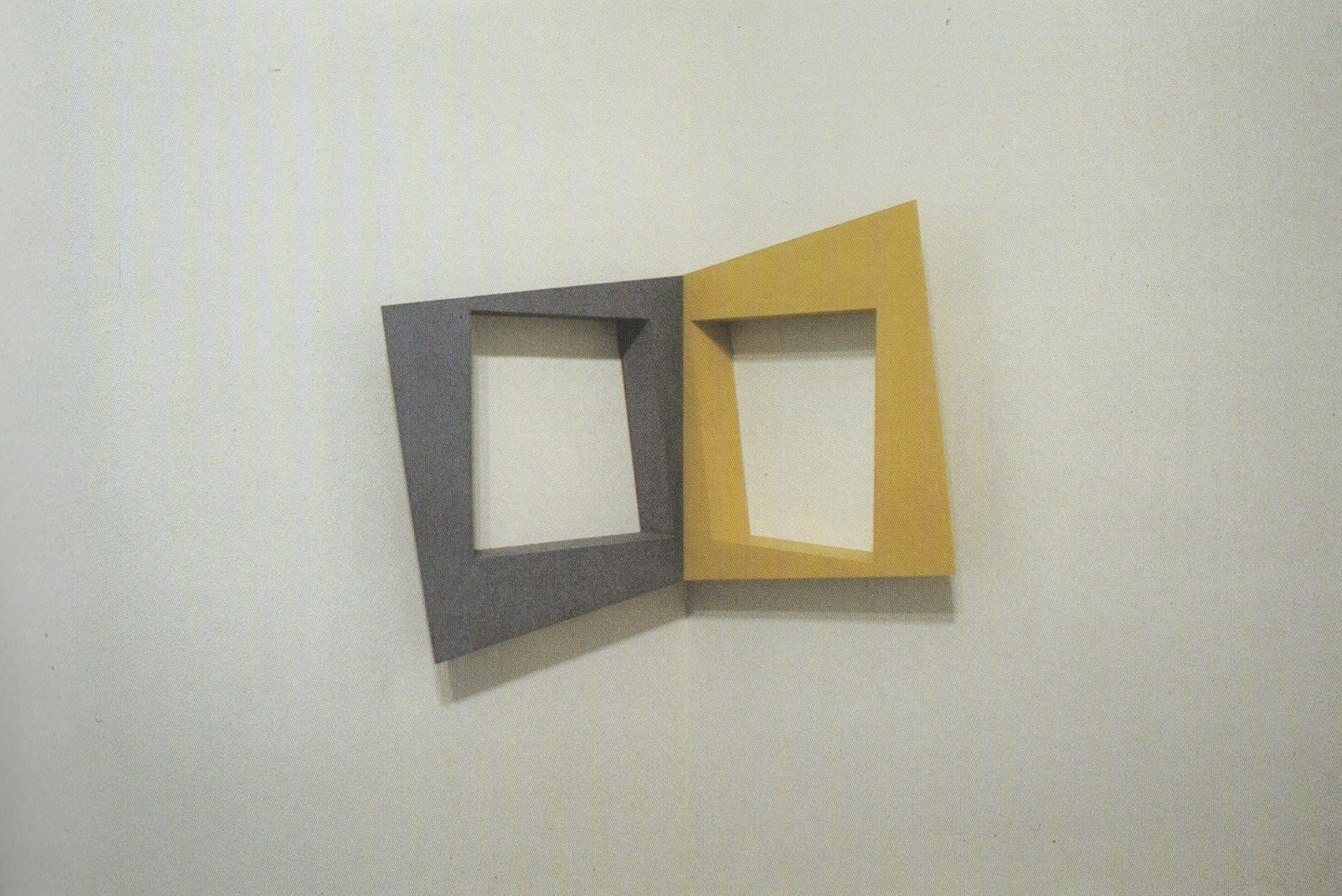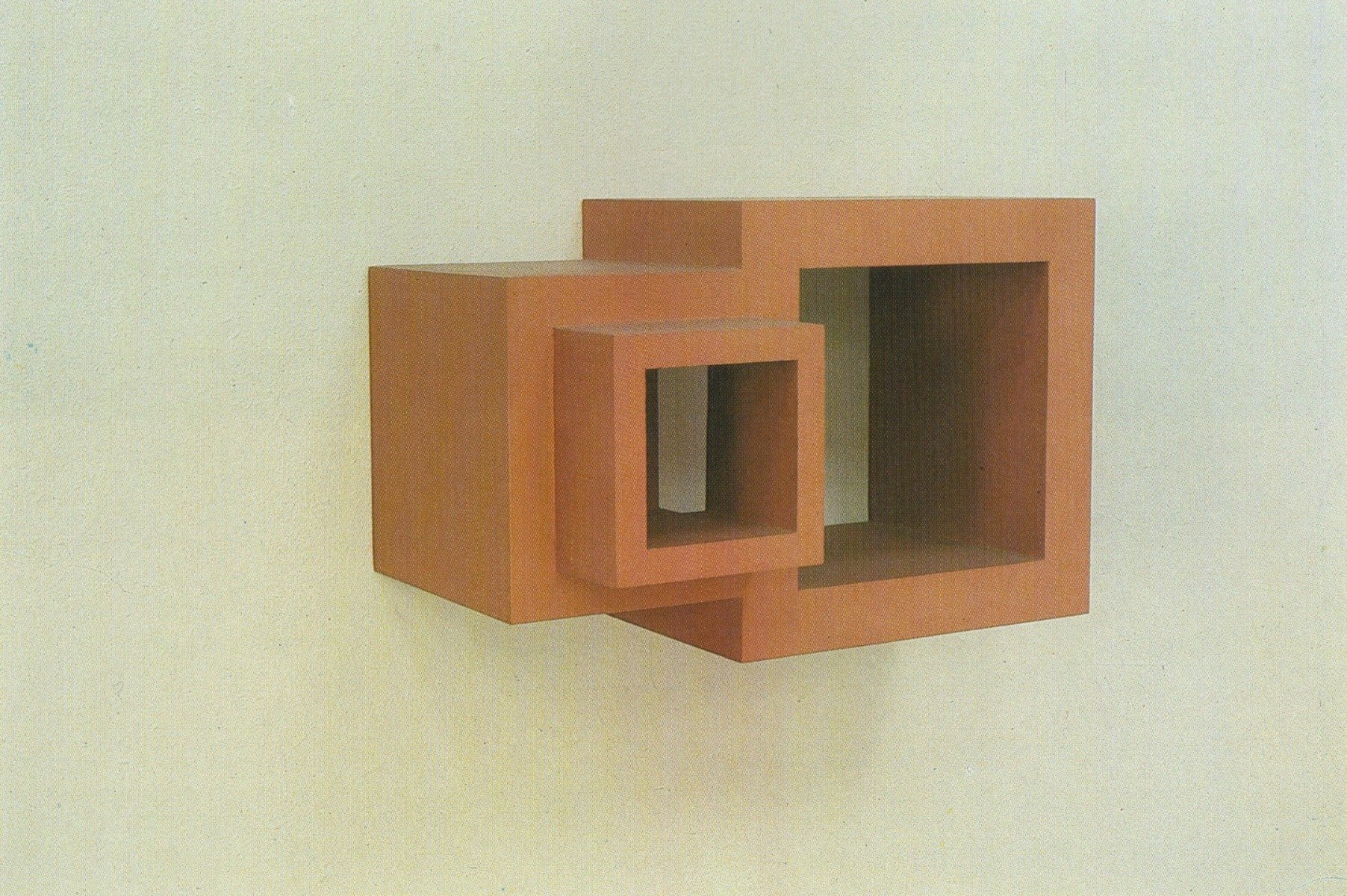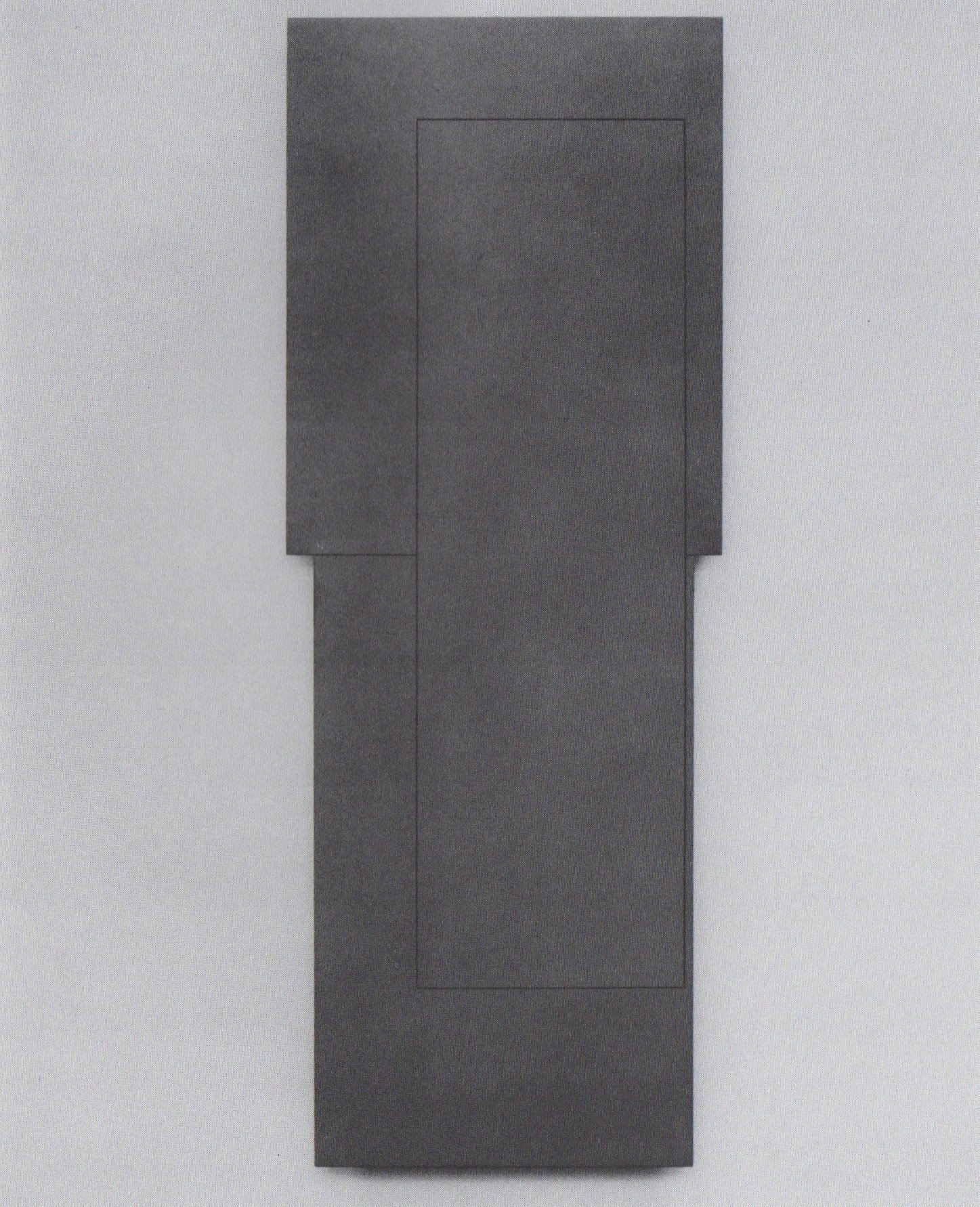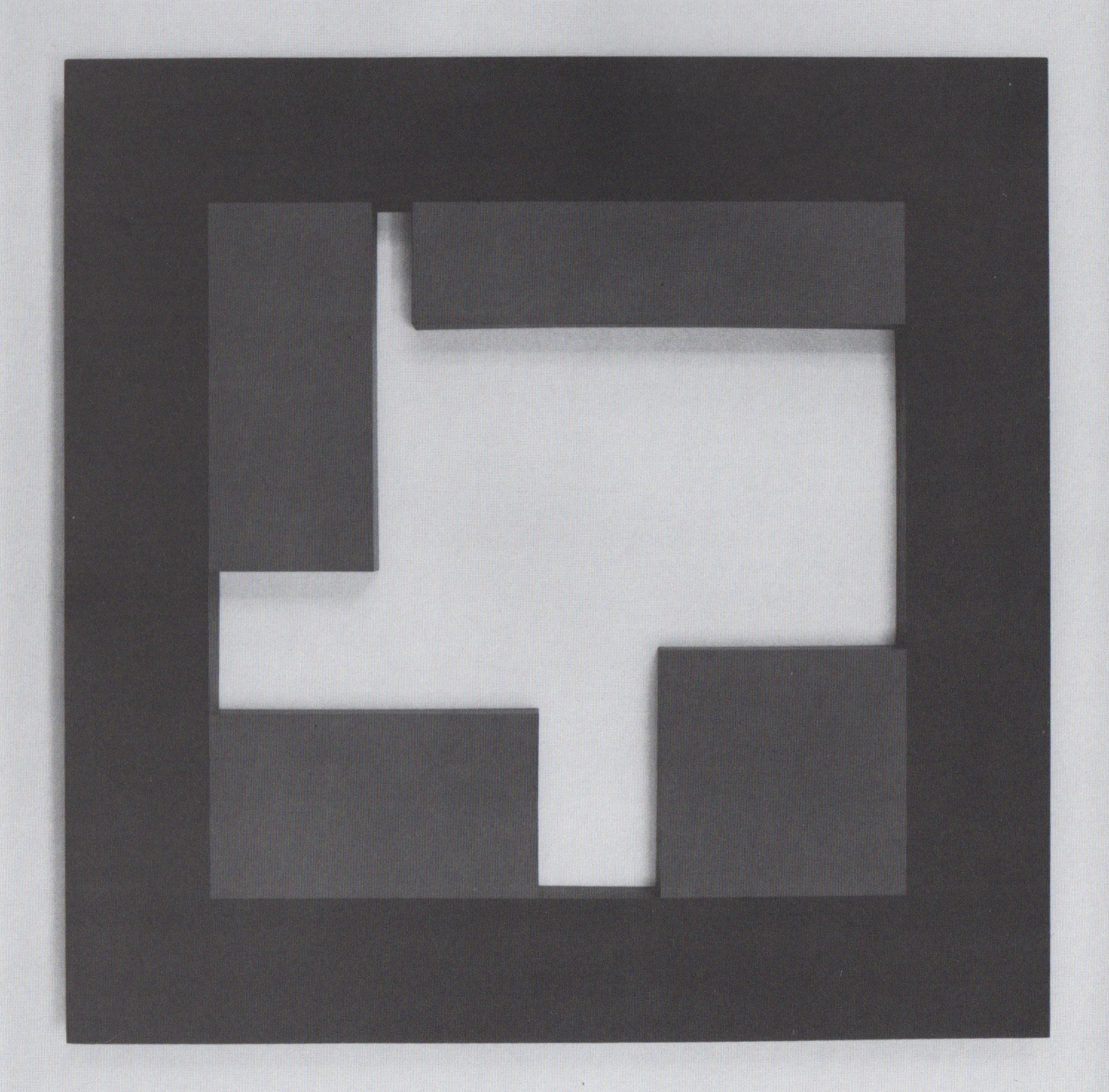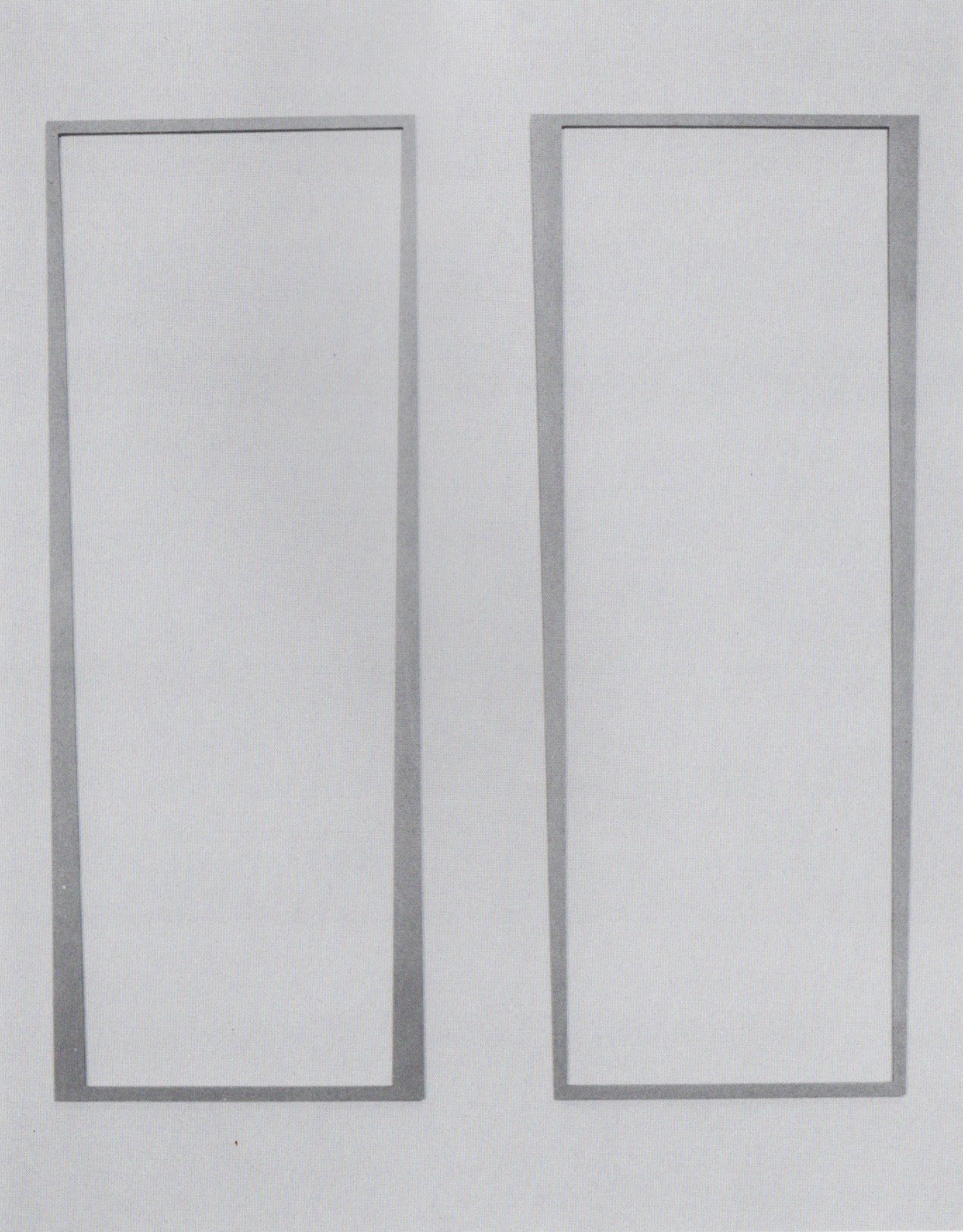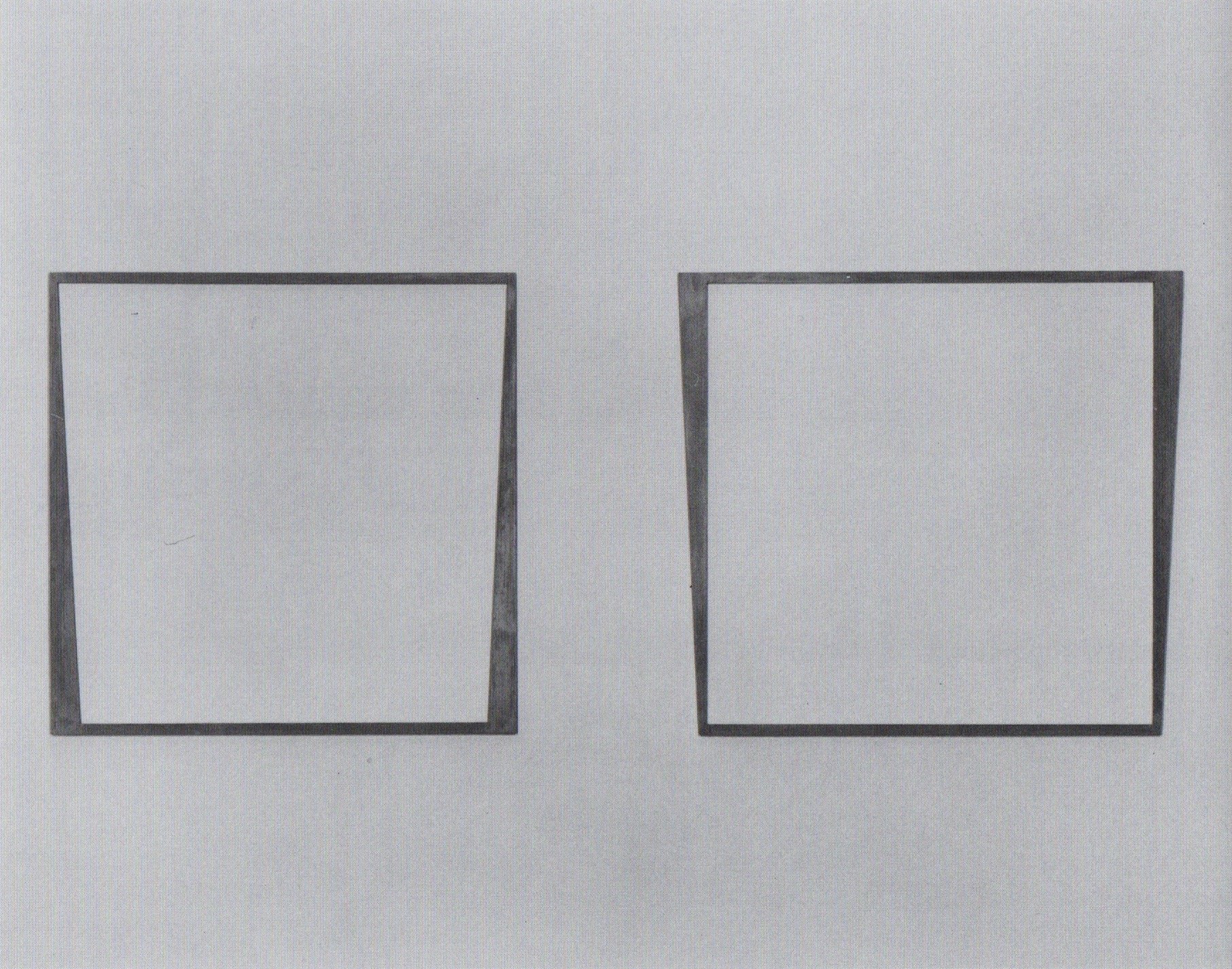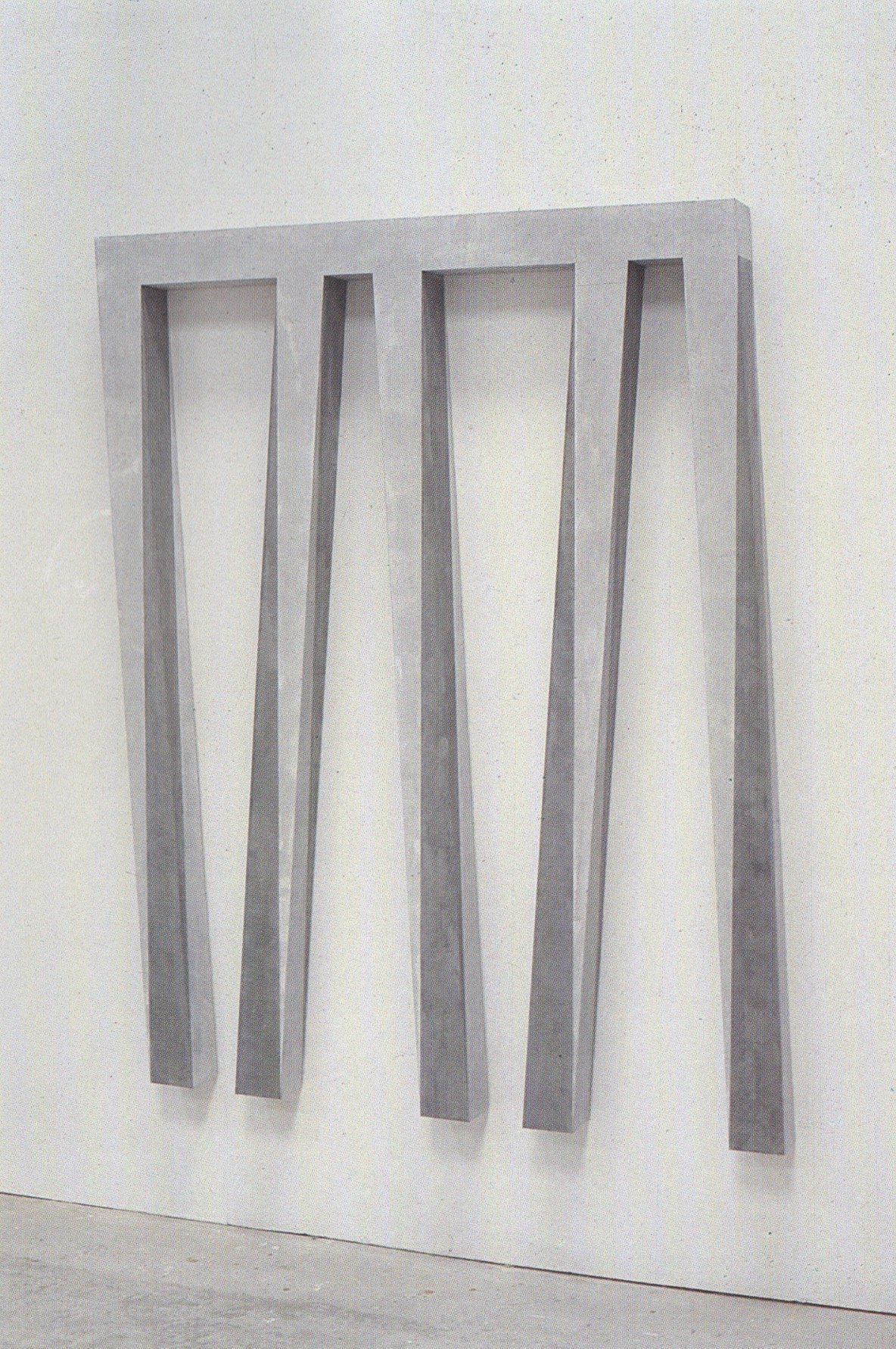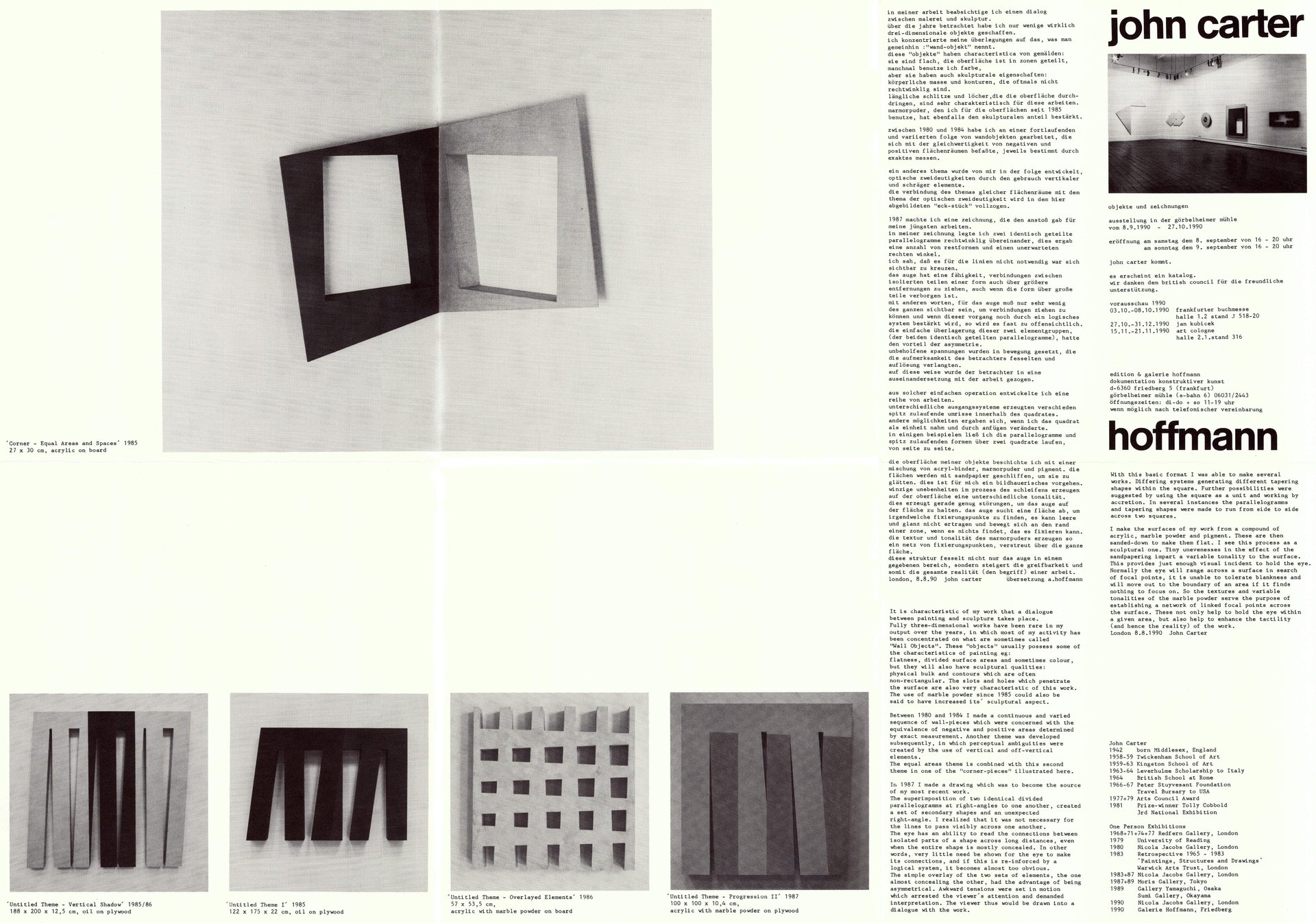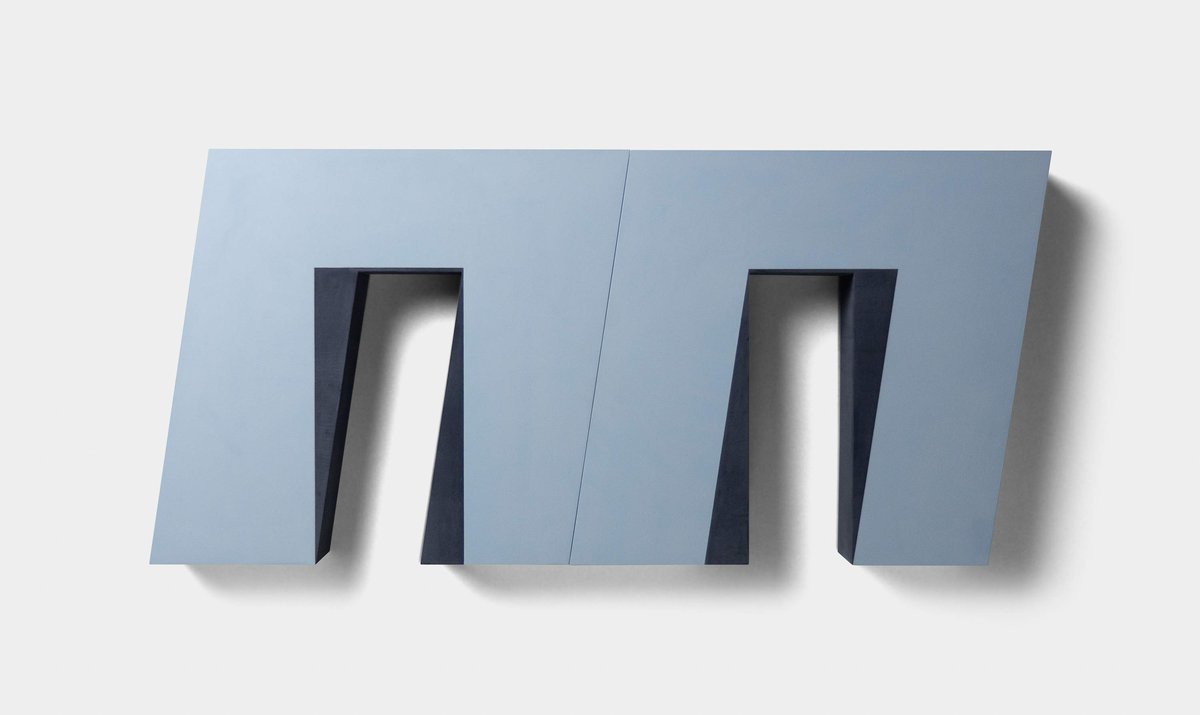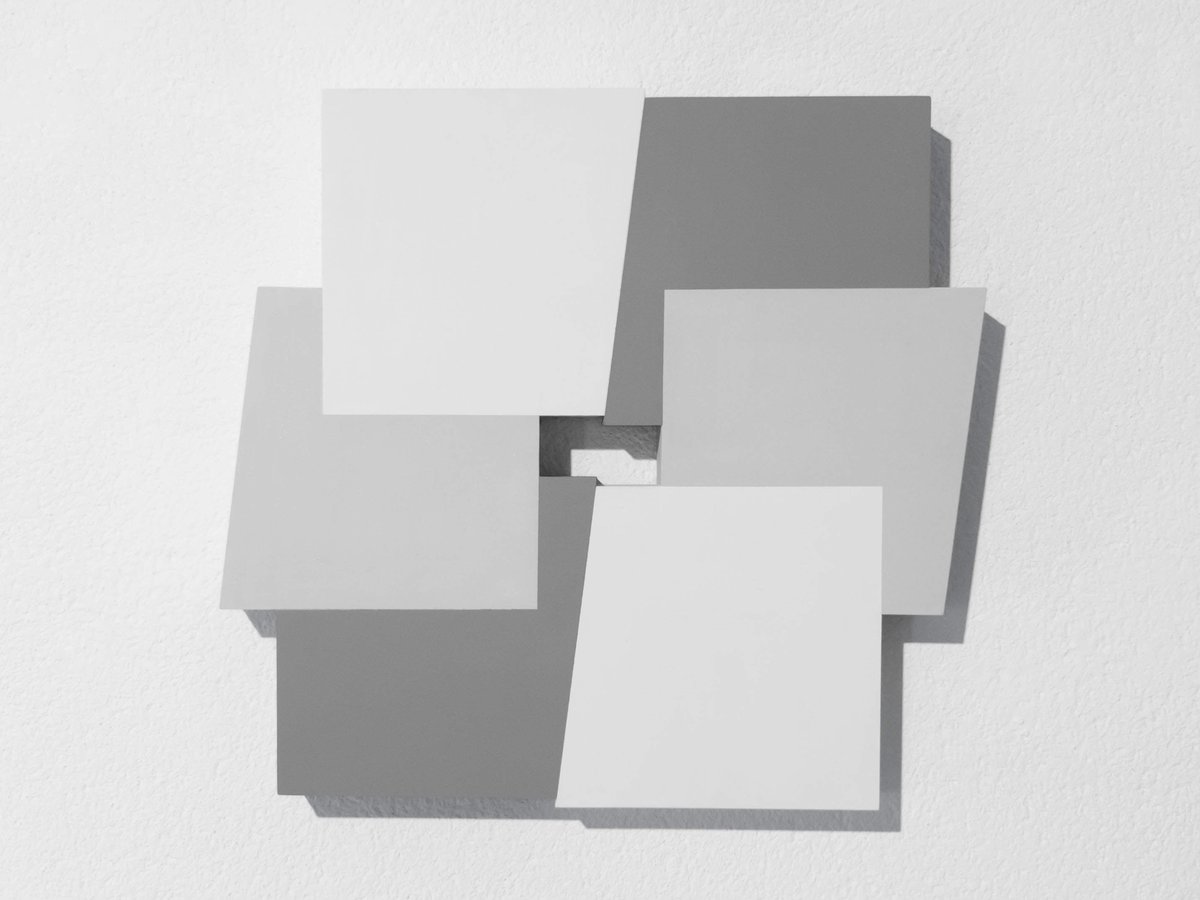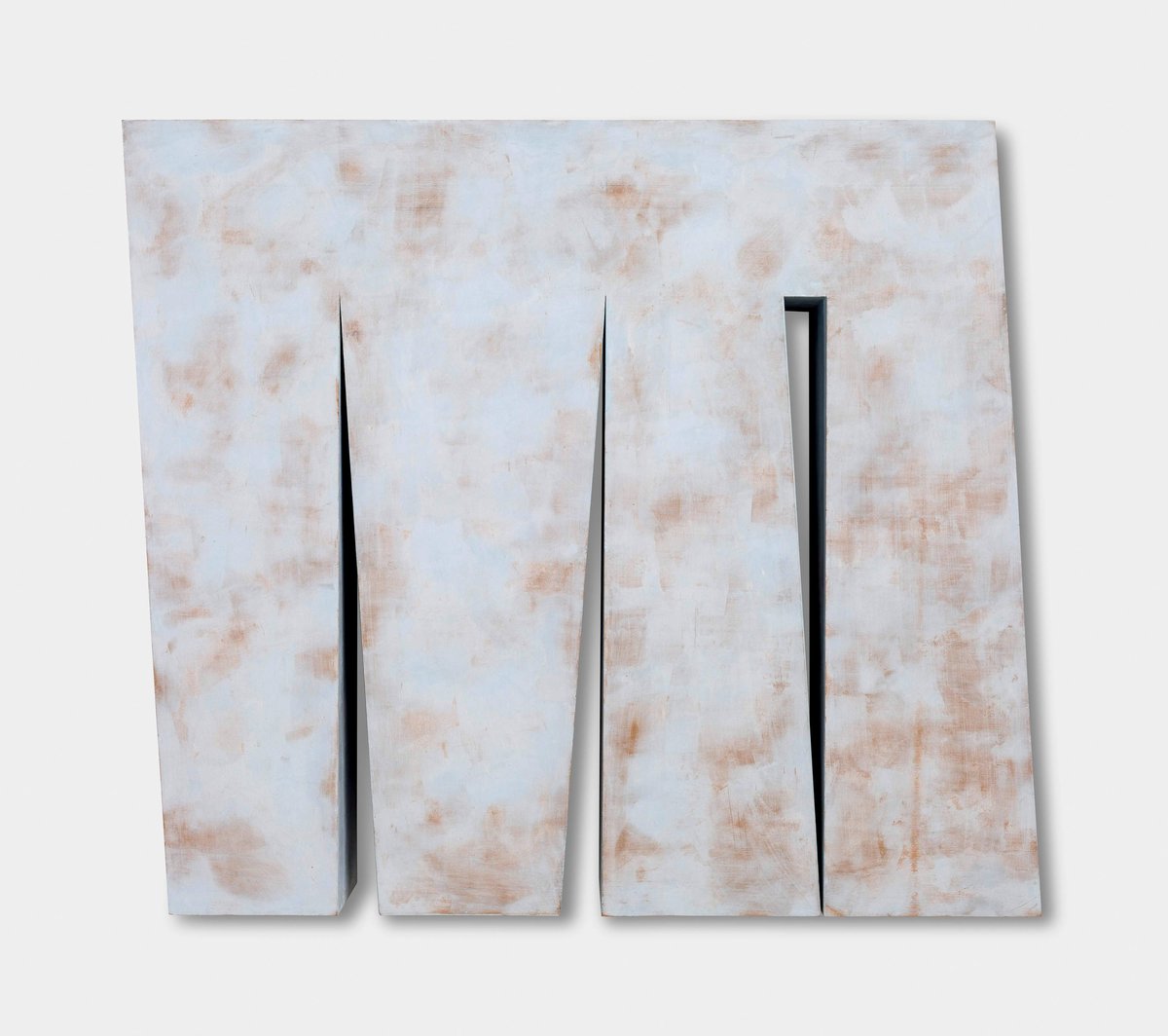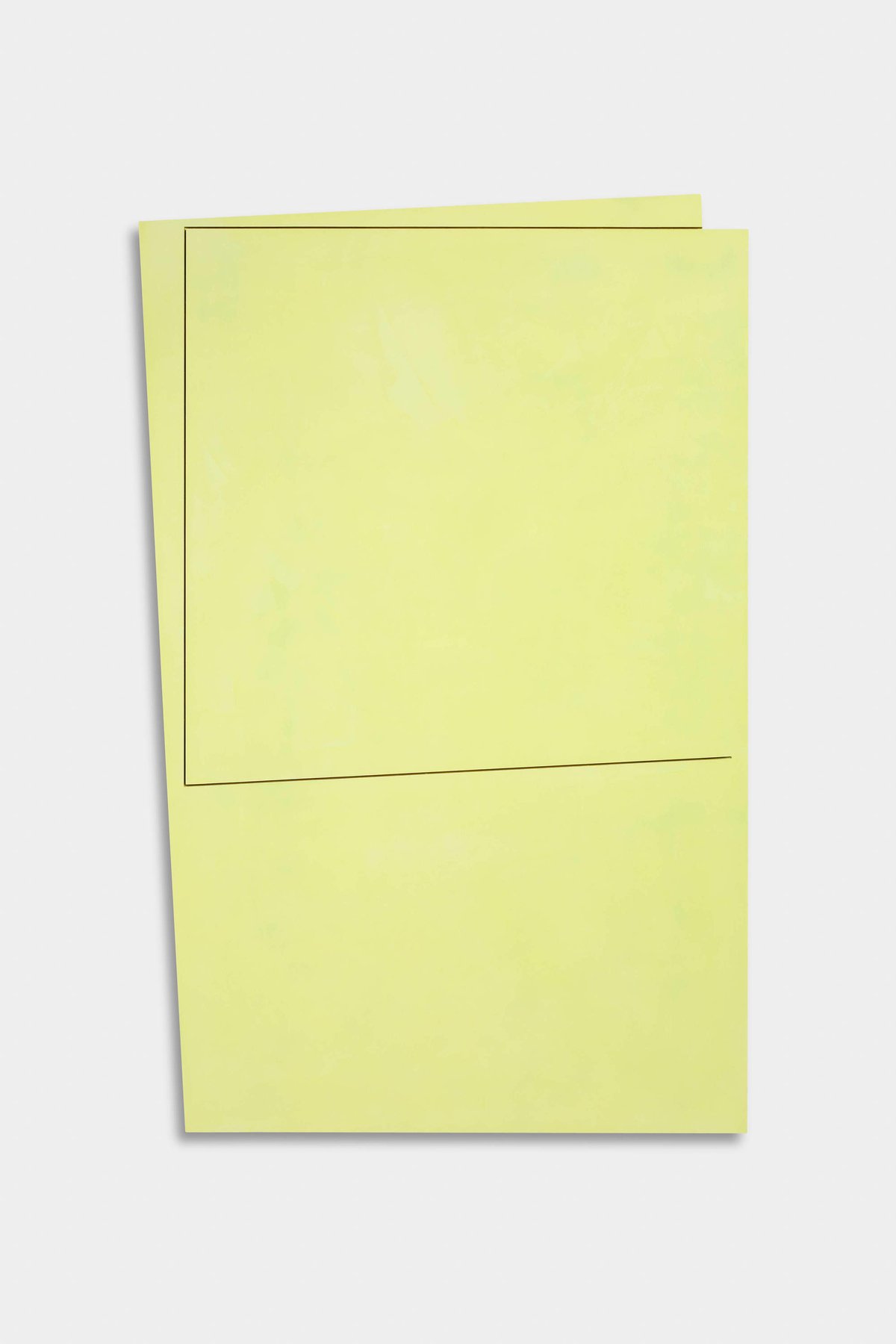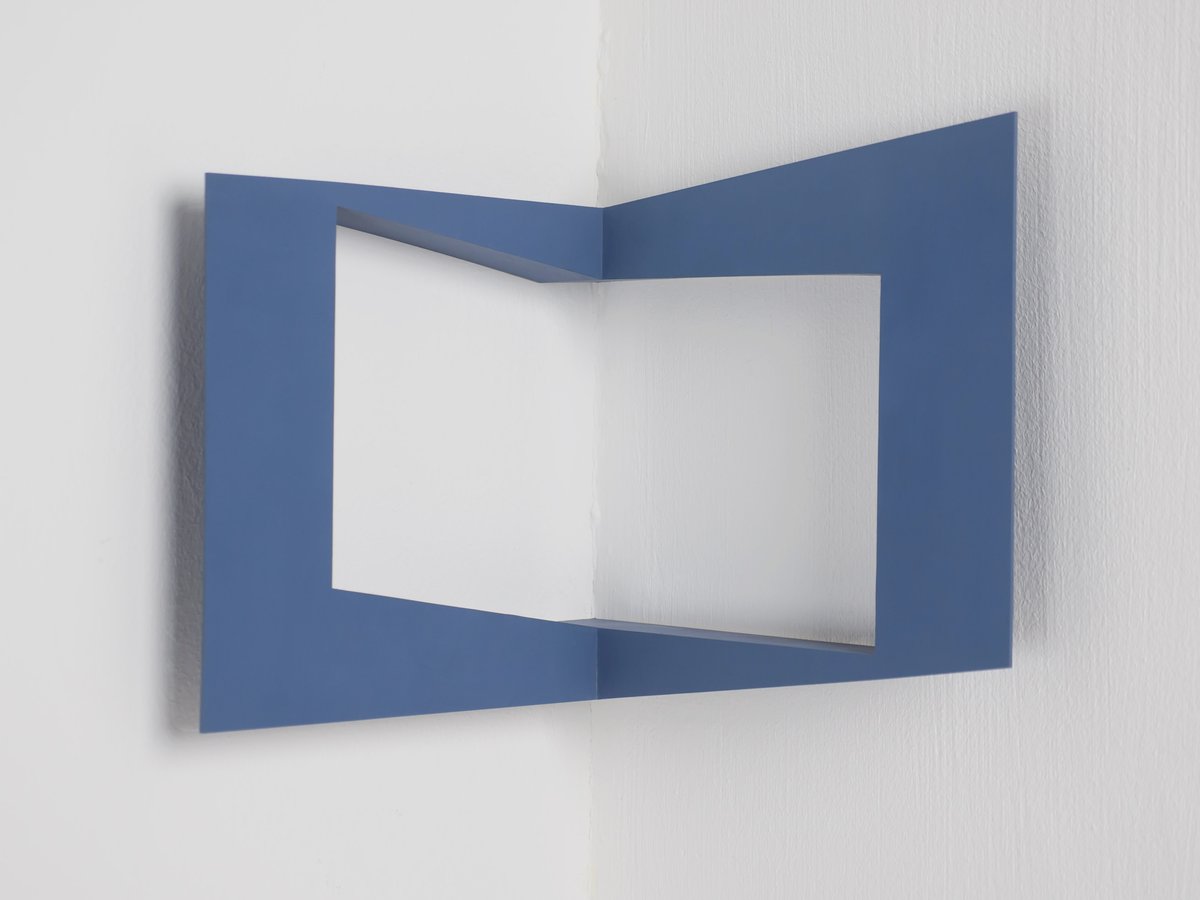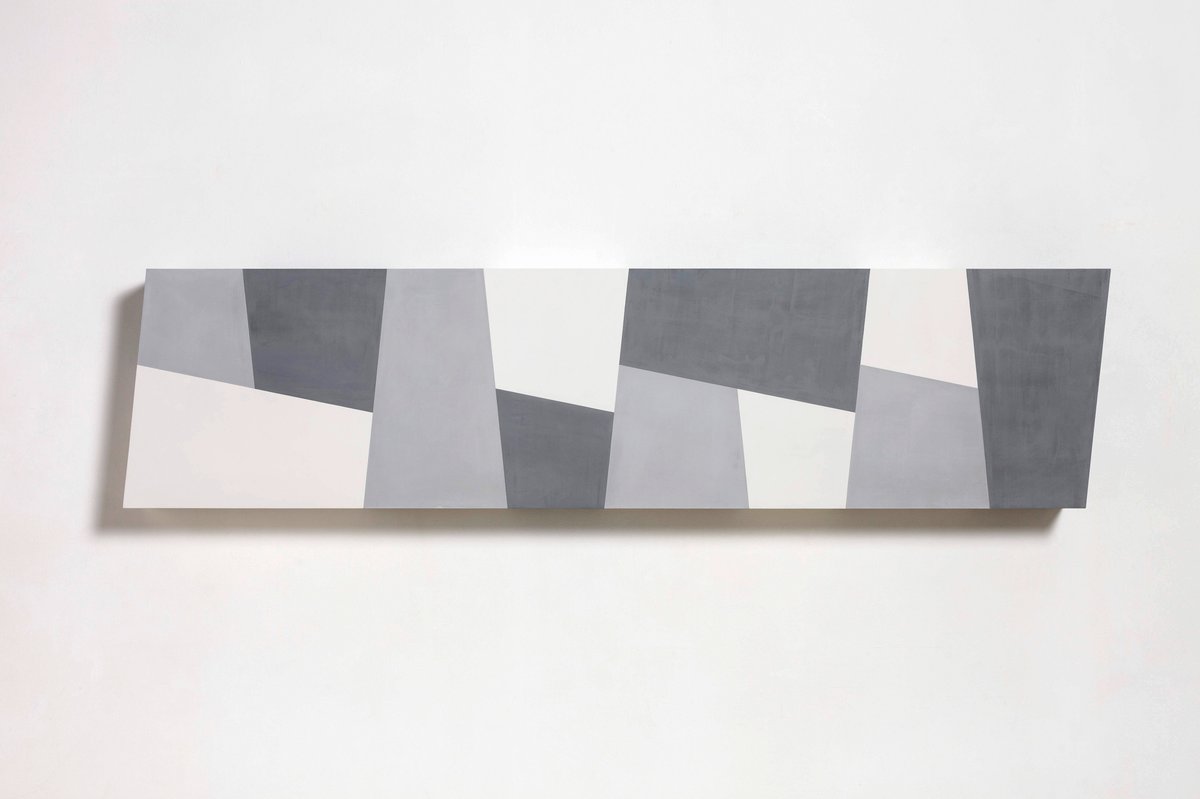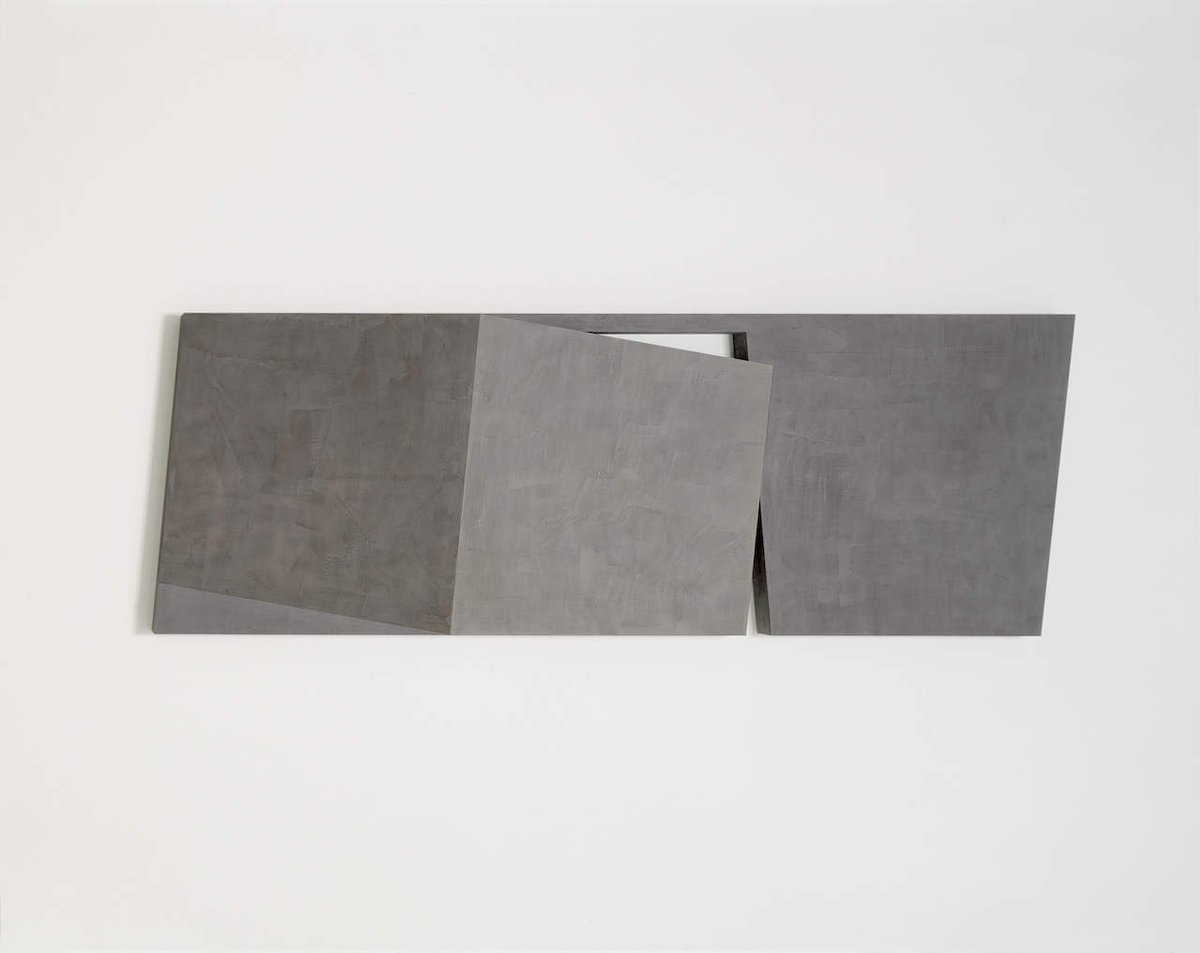john carter
in some of the earlier works in this exhibition for example the small sculpture "painted structure: squares" (1983), i used a concept of negative and positive spaces calculated exactly in terms of area (see fig. 1). this produced some surprising results. it is hard to believe, that the inner square is the same area as the thin band around it, but this is in fact the case.
i made a work "assembly of rectangles i" (1981), which is flatter and more of a painting (see fig. 2). here you have three shapes, all of which have the same area, one is placed over the other two at exactly the halfway point. it obscures half the area from one shape and half from the other.
another work from this period "equal areas within a square" (1983), was a square which contained four inner shapes, each of these were of the same area, they may be 400 square centimetres, but each shape was a different rectangle (see fig. 3). these four shapes together added up to the area of the negative shape and was of an exact equation of spaces and forms.
the depth of this work was made by a plane, which moved back to meet the wall. this was the same as the area which had been cut out from the centre of the square. there was no waste! everything which was in the negative area had become the sides. the square thus became a plane floating off the wall. the same procedure was used in "corner – equal areas and spaces 1985" (see fig. 4).
in 1979 i made a group of works entitled "frames" (see fig. 5 & 6). these made strong use of empty or negative shapes. i hoped these shapes would have a power, equivalent to the frame, which contained them. they made the empty shape tangible. these works were in opposite pairs, in which apparent similarities were contrasted.
in another work exhibited here "untitled theme: pierced blue square" (1986), the very small holes seem to have a visual power which is as strong as the plane into which they are cut (see fig. 7). you can read this work in two ways, either as bands with holes in between them, or as a square with apparently random holes. another aspect of this work, which i like, is that the holes are "sculpture": they are three dimensional and yet they have a graphic effect. when you first see the work these appear to be painted marks, then as you move closer you realize that they are real holes.
